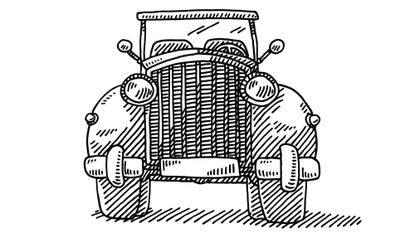How to buy a classic car
Been dreaming of buying a classic car but don't know where to start? Follow this guide to cruise through the process


Understanding how to buy a classic car is essential for ensure you get value for money. Cars are hideously complicated things, with a near-infinite number of parts that can break or explode.
But that’s equally true of new cars than old, so why not roll the dice? If you buy a good ‘un, it may well be a one-way ticket to Smilesville.
(MORE: Classic car insurance)
Here are some things to consider:
Speak to other classic car owners
You’d be mad to buy a Consul Capri or a Maxi simply because you liked the shape or your mum had one when you were a kid, only to go and buy one blind because ‘it’s what I’ve always wanted’.
Do some research. Find out how much good examples sell for, what their notable weak spots are, what parts availability is like, how easy they are to fix. You can probably find a buying guide online. Join a forum and ask a few questions of people who already own them.
This research – which only costs your time, remember – will probably save you a whole heap of cash. Go to car shows, talk to owners, get real-world info.
Look After My Bills Newsletter
Get the best money-saving tips, tricks and deals sent straight to your inbox every week. Make sense of your money in partnership with The Money Edit.
Buy the best classic car you can
This may sound obvious, but it’s your most important consideration. You almost certainly won’t find a bargain; if you’ve stumbled across a shiny, solid-looking MGB GT for £200, its chassis will be made of Swiss cheese.
‘Too-good-to-be-true’ is a self-fulfilling prophecy. You need to be sensible with your budgeting, basically: if good examples of the car you’re after (and I’m going to pluck some figures from the air here) are going for, say, £3000, then you can take that as your main outlay and factor in £500 for insurance and £500-1000 for maintenance, repairs etc.
These are all arbitrary figures of course, but the key point is that the cost of the car isn’t the whole cost; furthermore, if you find an example of that same car for £1000, that doesn’t automatically mean you can shuffle the two grand you’ve saved into the maintenance fund and hope it’ll balance out – there’s a reason it’s only a grand. Which will become apparent when the bills start rolling in.
Don’t cut corners, save the heartache and buy the best you can afford.
Don't be afraid of high mileage associated with classic cars
Cars are built to be driven. While it may be an impressive boast in the pub to say ‘my car’s only done 8,000 miles since 1976’, it actually just smacks of wastefulness. These are machines, designed to be used. Help them fulfil their purpose, drive them!
On a less metaphysical level, using a car regularly keeps it working properly – if you go to view a car that’s been ‘dry-stored for the last ten years’ or similar, that probably means that the brakes have seized, the tyres have flat-spots and the engine needs a thorough refresh. Don’t be afraid of pampered cars (indeed, embrace them), but be wary of ones that don’t get used.
Have a good think about where to buy it from
Buying privately can be a good option. The seller will often have a story to tell, a fondness for the car, a keenness for it to go to a good home. A dealer, more often than not, just wants to make some money from you.
While buying a newer car from a dealer may offer you the safety-net of a warranty, this won’t be the case with a classic, because there are just too many variables, too many things to go wrong.
Without being callous, you can also tug the heartstrings of a private vendor a little bit in order to get the price down. They’ll want to sell to the right home. Make sure you are that right home, and it may pay off.
Poke around both the car and the paperwork
Get the thing on a ramp and go on a gremlin-hunt. (If you’re not mechanically-minded, your friendly local independent garage can undoubtedly be persuaded to assist.)
You’re looking for rust, accident damage, leaks, evidence of welding and/or repairs, and also the general condition of things – how old do those brake discs and shock absorbers look? Are those exhaust hangers perished? Do those tyres match? Signs that the owner hasn’t scrimped on these things suggest good overall care and love.
The paperwork will tell you a lot about the history of the car too: not just how frequently it’s been serviced, but where the work was done, what was needed, what will need doing soon.
Again, don’t be afraid of high mileage or large numbers of previous owners – these are old cars, that’s what happens. But do be suspicious of cars with no history. And ask the seller why he’s getting rid. Look him in the eyes. Do the Derren Brown thing, climb into his mind.
All of this sounds a little scary, but don’t worry – it’s just common sense really. Classic car ownership is something that will enrich your life, make your friends envious, speak volumes about your good taste, and provide you with countless happy memories. Follow the above advice and, with any luck, you won’t land yourself with a horrendous rusty money pit. Just remember those golden rules: Research, budgeting, thorough checking.
A freelance consumer motoring journalist, Daniel has contributed to titles such as Retro Cars, Banzai, Performance BMW, Classic Ford, Fast Car, Performance VW, Fast Ford, and various others.